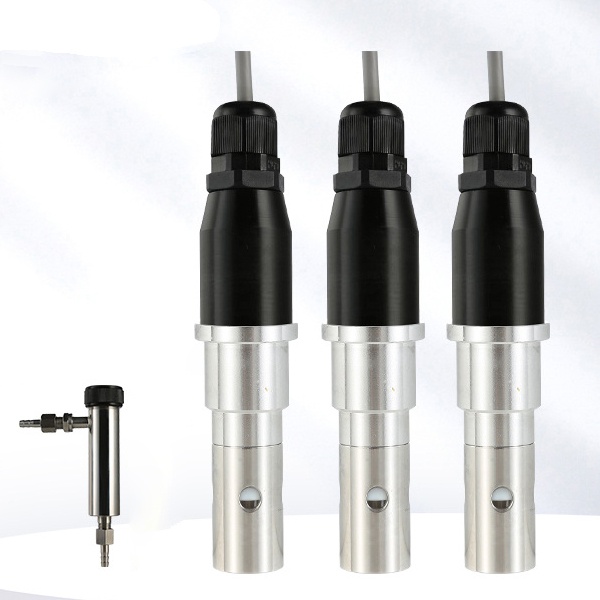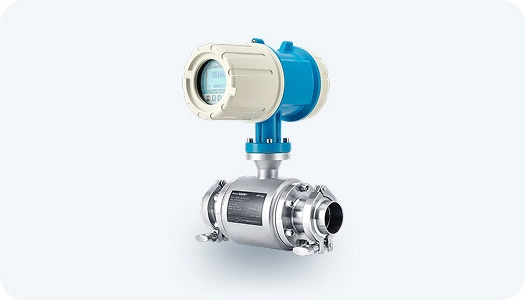-
Date:2025-10-10
-
Page View:48
Conductivity water sensors are devices used to measure the electrical conductivity of a solution and are widely applied in fields such as water quality monitoring, environmental protection, and the chemical industry. However, in practical applications, various factors can introduce errors in the sensor measurements. Improving the accuracy of conductivity water sensors is a multifaceted process. Below are some key steps:
1.Proper Installation and Setup
Before using a conductivity water sensor, it should be correctly installed and configured according to the manufacturer’s instructions. Ensure the electrode is fully immersed in the solution, avoiding interference from air bubbles or contaminants. Additionally, adjust relevant parameters to optimize measurement performance.
2.Calibration and Standardization
Regular Calibration: Periodically calibrate the sensor using standard solutions with known conductivity values to ensure measurement accuracy. Follow the sensor’s manual or relevant standards during calibration for optimal results.
Multi-Point Calibration: Where possible, perform multi-point calibration to enhance sensor precision and reliability. This helps identify and correct non-linearity or deviations across the entire measurement range.
3. Electrode Maintenance
Keep Electrodes Clean: Regularly clean the electrodes to remove dirt, grease, or other contaminants that may affect measurement accuracy. Use mild detergents with a soft cloth or sponge, and avoid abrasive cleaners or stiff brushes.
Inspect Electrode Condition: Periodically check the electrodes for damage, corrosion, or deposits. Replace or repair any damaged electrodes promptly.

Conductivity Water Sensor

Conductivity Sensor
4. Keep the Sensor Clean
Maintaining the cleanliness of the conductivity water sensor is crucial for improving measurement accuracy. Regularly clean the sensor surface and electrode parts to prevent interference from contamination or impurities. At the same time, avoid using harsh chemicals or high-pressure water to clean the sensor, as this may damage the sensor or affect its performance.
5. Temperature Control and Compensation
Temperature Control: Whenever possible, operate the sensor under stable temperature conditions, as temperature fluctuations can affect the conductivity of the solution. If environmental temperature control is not feasible, consider using the temperature compensation feature to minimize the impact of temperature on measurement results
Temperature Compensation: Many conductivity water sensors are equipped with a temperature compensation function, which adjusts the measurement results based on the actual temperature of the solution. Ensure the temperature compensation feature is properly configured and used to enhance measurement accuracy.
6. Eliminating Interference Factors
Electromagnetic Interference: Keep the sensor and its connecting cables away from strong electromagnetic fields to minimize the impact of EMI on measurement results.
Chemical Interference: Avoid exposing the sensor to solutions that may cause chemical reactions, as this can compromise electrode performance and measurement accuracy.
7. Using High-Quality Sensors and Instruments
Proper use and maintenance of conductivity water sensors can extend their service life and improve measurement accuracy. Avoid overuse or misuse of sensors, and always follow the manufacturer's recommendations for operation and maintenance. Additionally, pay attention to storage environment conditions by controlling humidity and temperature to prevent sensor moisture damage or aging.
Matching Instruments: Use high-quality measuring instruments that are compatible with the sensor to ensure the accuracy and reliability of the entire measurement system.
8. Following Operational Standards
Proper Operation: Ensure operators have received professional training on the correct methods for using and maintaining conductivity sensors.
Adherence to Guidelines: Always follow the manufacturer's operational and maintenance guidelines to ensure optimal performance and extend product lifespan.
Improving the accuracy of conductivity water sensor readings requires a dual approach focusing on both design and operational factors.
Design optimizations – including enhanced electrode materials, improved circuit design, and better anti-interference capabilities – contribute significantly to measurement precision.
On the operational side, key measures such as correct installation and setup, regular calibration and verification, consistent sensor cleaning, avoidance of sharp temperature fluctuations, and proper usage and maintenance further help boost accuracy.
In practical applications, users should select suitable conductivity water sensors based on specific needs and operating conditions, and apply the corresponding optimization practices to ensure reliable and accurate measurement results.










